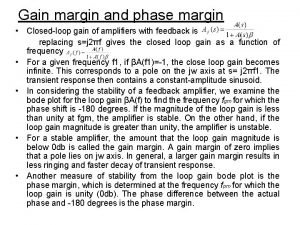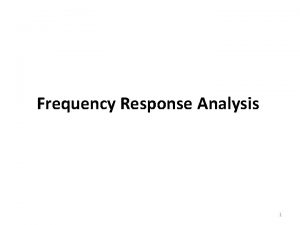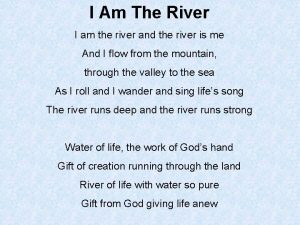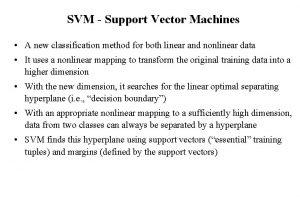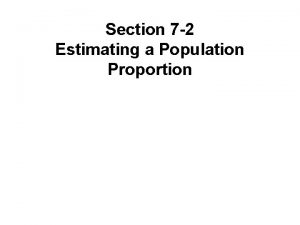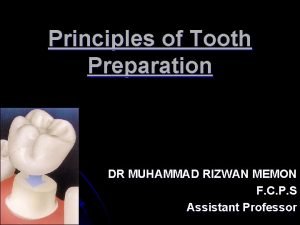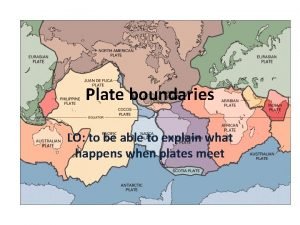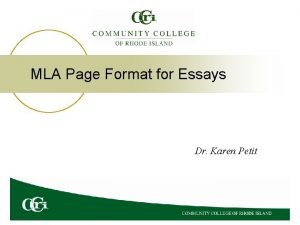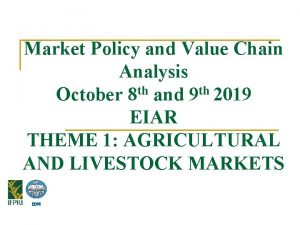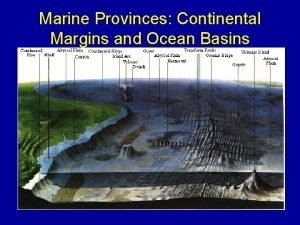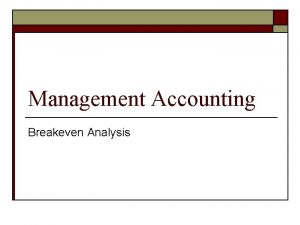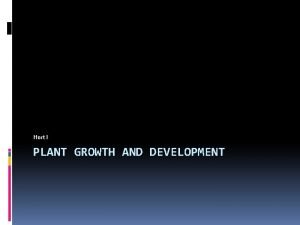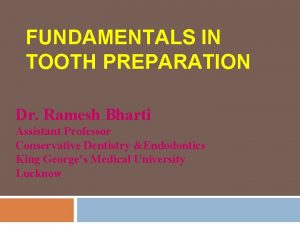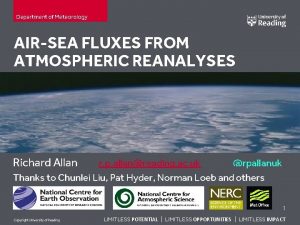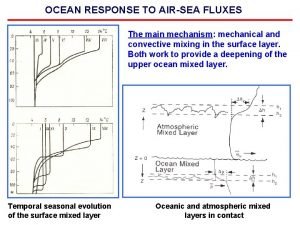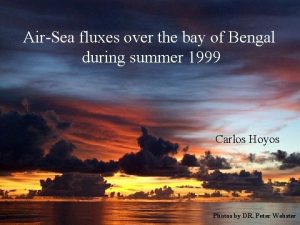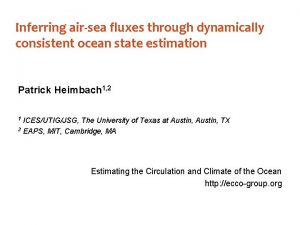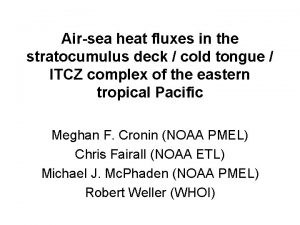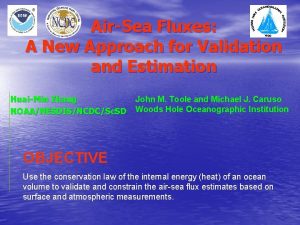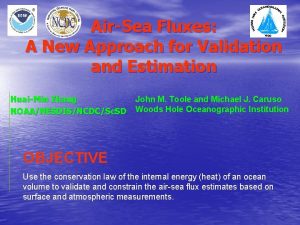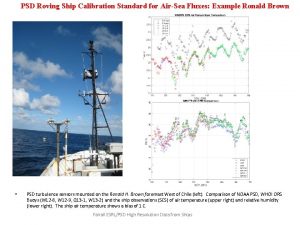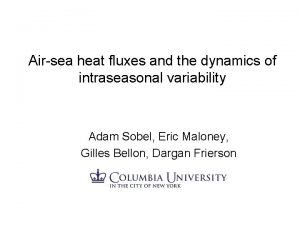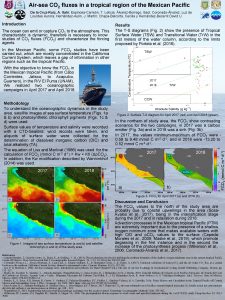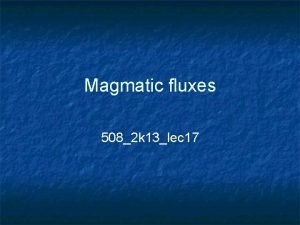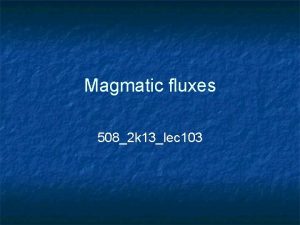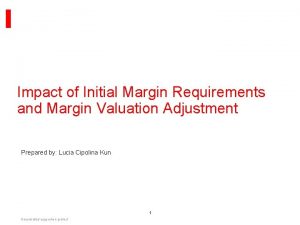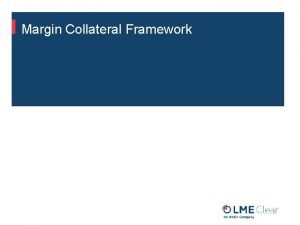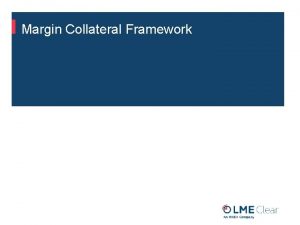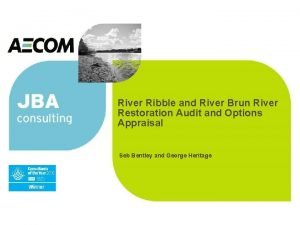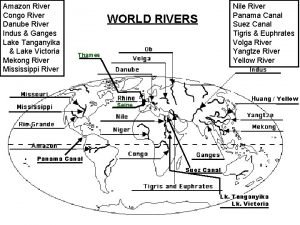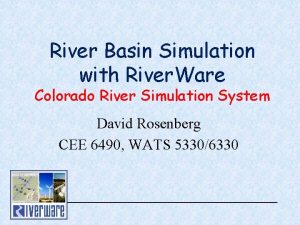Assessment of River Margin AirSea CO 2 Fluxes

























- Slides: 25

Assessment of River Margin Air-Sea CO 2 Fluxes Steven E. Lohrenz, Wei-Jun Cai, Xiaogang Chen, Merritt Tuel, and Feizhou Chen 2006 OCRT Meeting, Providence

Introduction § A major objective of the U. S. Global Change Research Program Climate Change Science Program Strategic Plan and the North American Carbon Program is the application of satellite ocean color to characterize the spatial variability of air-sea CO 2 flux in the oceans adjacent to the North American continent

Introduction l Despite their relatively small surface area, ocean margins may have a significant impact on global biogeochemical cycles, and potentially, in the global air-sea fluxes of CO 2

Introduction Margin ecosystems receive inputs of terrestrial organic and mineral matter and exhibit intense geochemical and biological processing of carbon and other elements l Nowhere is this more evident that in regions influenced by large rivers l

Introduction Recent studies (Lohrenz and Cai, 2006) in the northern Gulf of Mexico and elsewhere (Tsunogai et al. , 1999; Ternon et al. , 2000; Cai, 2003) demonstrate that enhanced biological production in large river plumes may lower surface p. CO 2 levels such that these regions may exhibit a net surface influx of atmospheric CO 2 l But characterizations have not been conducted over representative seasonal and discharge conditions l

Introduction Systems are likely to differ depending on the both biological, chemical, and meteorological properties l Quantification of the contributions of riverinfluenced margins to regional CO 2 fluxes is difficult due to the high degree of spatial and temporal variability in these regions l

Introduction Satellite-based regional approaches (e. g. , Lefevre et al. , 2002; Ono et al. , 2003; Olsen et al. , 2004; Lohrenz and Cai, 2006) can be used to extend the spatial and temporal coverage for broad scale assessments of p. CO 2 distributions and air-sea fluxes of CO 2 l The primary objective of our research is to apply these approaches to the characterization of p. CO 2 and air-sea fluxes of CO 2 in the river-influenced margin of the northern Gulf of Mexico l

Outline l Brief description of approach as applied to the Mississippi River outflow region l Summary of initial findings – June 2003 – August 2004 – October 2005 l Challenges and future directions

Approach

Approach l In situ measurements of surface p. CO 2 and environmental variables (T, S, chlorophyll) conducted

Approach Algorithm based on empirical relationships of in situ measurements of surface p. CO 2 to environmental variables (T, S, chlorophyll) l June 2003 l

Approach l Apply algorithm to products retrieved from MODISAqua imagery

June 2003 Approach l Produce map p. CO 2

Approach l l Additional cruises in August 2004 and October 2005 August 2004 October 2005

Approach l PCA algorithms l August 2004 (r 2=0. 858) October 2005 (r 2=0. 974)

Results l Aug 2004 August 2004

Results

Results l Aug 2004 October 2005

Results

Results l Air-sea flux calculations: – CO 2 fluxes across the air-sea interface were calculated by the one-dimensional thin-film model: • CO 2 Flux = k [p. CO 2(w) – p. CO 2(a)] – where k is the gas transfer velocity and has the largest uncertainty in the flux calculation; is the solubility of CO 2 at given temperature and salinity

Results l Air-sea flux calculations: – Various sets of the gas transfer velocity, k, vs. wind speed relationships were used to provide a range of values to bracket the gas flux including: • Liss and Merlivat, 1986; Wanninkhof and Mc. Gillis, 1999; Nightingale et al. , 2000; Mc. Gillis et al. , 2001

Results There was net uptake of CO 2 in June, but a net release in August and October l October 2005 followed two major storm events accompanied by coastal flooding; strong winds l June 2003 Air-Sea Flux (mmol m-2 d-1) -(2 -4) August 2004 6 -10 October 2005 53 -120 Cruise

Challenges and Future Directions l Challenges – Variability in conditions in coastal waters limits the generality of algorithms across temporal and spatial ranges – Remedy is to provide ample in situ data, including ship-based surveys and moored time-series – Couple ship-based operations with radiometric measurements to provide complementary data set

Challenges and Future Directions l Future Directions – Continued characterization of Mississippi River system to capture range of seasonal and discharge conditions – Comparison of other river systems and shelf environments – Relate patterns to biogeochemical rates (primary production, net ecosystem metabolism) – Couple observations with ecosystem models to provide more informed understanding of carbon cycle controlling mechanisms

Acknowledgements l Funding for this work was provided by NASA (NNG 05 GD 22 G and NNS 04 AB 84 H)
 Amplifier phase margin
Amplifier phase margin Relative frequency formula
Relative frequency formula Green river watershed
Green river watershed I am the river and the river is me
I am the river and the river is me Characteristics of portfolio assessment
Characteristics of portfolio assessment Static assessment vs dynamic assessment
Static assessment vs dynamic assessment Portfolio assessment matches assessment to teaching
Portfolio assessment matches assessment to teaching Margin in svm
Margin in svm Phase margin formula
Phase margin formula Margin of error formula
Margin of error formula Why break-even point is important
Why break-even point is important Standard safety margin
Standard safety margin Functional cusp bevel of mandibular molar
Functional cusp bevel of mandibular molar Constructive plate boundary
Constructive plate boundary Noise margin definition
Noise margin definition Mla format
Mla format Marketing margin
Marketing margin Shelf break
Shelf break Question in the margin system
Question in the margin system Accounting break even point
Accounting break even point Hypoglossal canal
Hypoglossal canal Straight chisel dental use
Straight chisel dental use Function of the margin of a leaf
Function of the margin of a leaf Break even formula gcse
Break even formula gcse Business formula sheet gcse
Business formula sheet gcse Convenience form in cavity preparation
Convenience form in cavity preparation
